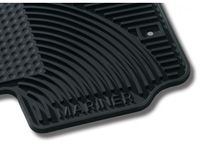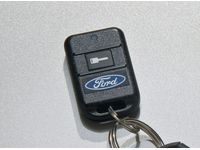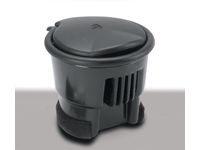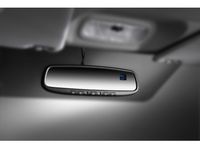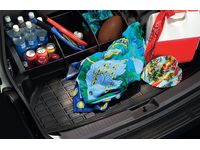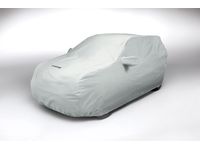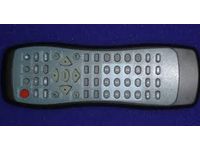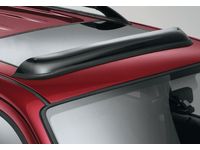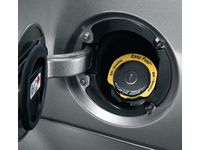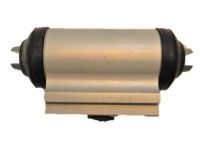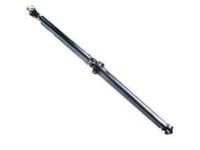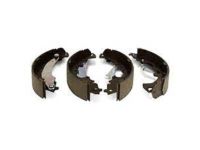

Why choose FordPartsGiant
- Devoted Service
At FordPartsGiant.com, we strive to make customer satisfaction our #1 goal by providing dedicated customer service. Our core values of success continue to demonstrate our loyalty by building dedicated relationships with all of our current and future customers. We are always ready to assist you with the slightest detail about your vehicle's parts and accessories.
- Reasonable Prices
We are the best online source for discounted prices on factory auto parts and accessories. Not everyone has the money to buy their vehicle quality parts, here at FordPartsGiant.com we make it economical to buy the best parts without sacrificing the quality or hurting your wallet.
- Swift Delivery
FordPartsGiant.com has centrally located distribution centers all across the United States. This gives you quick access to our discounted Mercury Mariner parts when you need them. We offer our customers the convenience of having parts delivered straight to their front door. We are committed to having your vehicle up and running in just a couple of days.
Popular Genuine Mercury Mariner Parts
- Engine Parts View More >
- Chassis Parts View More >
- Electrical Parts View More >
- Body And Paint Parts View More >
- Transmission Parts View More >
- Information And Customization Parts View More >
Shop Genuine Mercury Mariner Parts with FordPartsGiant.com
The Mercury Mariner, produced by the now-defunct Mercury division of Ford Motor Company, was a compact crossover SUV and Mercury's inaugural car-based SUV. Introduced in 2005, the Mariner was marketed primarily in the US, Mexico, Middle East, and earned recognition such as the Consumers Digest Best Buy for three consecutive years, and the Mariner Hybrid was named 2006 Green Car of the Year. The Mariner was notable for being the first Mercury to feature a four-cylinder engine since the discontinuation of the Mercury Cougar in 2002. Over its two generations, the Mariner saw a series of improvements. It was initially 4,442 mm long and 1,781 mm wide, but became larger in the second generation, featuring a redesigned interior with high-quality auto parts and new features, and an updated exterior, including new seats, headlights, doors, and wheels. It was powered by a 3.0L Duratec V6 engine, with its hybrid version introduced in 2006. Notably, the Mariner, along with the Ford Escape, was the first to showcase pull-drift steering compensation. The 2009 model saw further enhancements with a 2.5-liter engine and a 6-speed automatic transmission, resulting in improved fuel economy and an output of 170 horsepower. As for its 2010 model, it added Flex-Fuel capabilities, and the 2011 model introduced HD Radio, a strong selling point being the Sync system. Production of the Mercury Mariner ceased on October 5, 2010.
The Mercury Mariner, spanning models from 2005 to 2010, confronted two prominent issues: power steering malfunctions and transmission failures. For the 2008, 2009, and 2010 models, the recurrent power steering dilemma manifested as an erratic loss, predominantly during low-speed tight turns. This problem was frequently linked to the power steering control module (PSCM) housed in the steering column. A 2014 recall attempted to rectify this through a software update, but the absence of a comprehensive hardware solution meant that numerous vehicles, even those seen during the recall, still grappled with the issue. Compounding this concern, certain Mariners, based on their VINs, were excluded from the recall, imposing both financial and safety burdens on the owners. Specifically, the 2008 model's power steering could falter even with proper fluid levels, often due to a flawed Steering Shaft Torque Sensor. To diagnose this, a Power Steering Control Module scan is imperative, with the B2278 code typically signifying a sensor issue warranting replacement. In parallel, the Mariner, especially the 2006 and 2008 models, exhibited transmission glitches, with symptoms like slippage and fluid leaks from compromised cooling lines, leading to an average replacement cost of about $2,035. Additionally, a significant recall (ID 15V606000 / 15S28) targeted Mariners with remanufactured CD4E transmissions from mid-2015, addressing a loose shift lever bolt risk. Ford's resolution involved either tightening the bolt or replacing the shift lever assembly. Other highlighted issues from Technical Service Bulletins encompassed engine stalling, missing gears, and common transmission ailments like leaks, unresponsiveness, and unusual sounds. While Mariners might achieve up to 180,000 miles without transmission issues, neglecting maintenance or unresolved design flaws could introduce complications. The go-to method for pinpointing these problems involves diagnostic tools, and based on detected codes, interventions might involve specific part replacements or even entire transmission overhauls.
OEM parts are made and tested to Mercury's official factory standards. They go through the strict manufacturing processes to maximize perfections. Our website provides an extensive catalogue of genuine Mercury Mariner parts at the most competitive prices. All OEM Mercury Mariner parts we offer are backed by the manufacturer's warranty, assuring you of their quality, reliability, and durability. Our seamless return policy and speedy delivery service further enhance your shopping experience!
Mercury Mariner Parts Questions & Answers
- Q: How to replace wheel cylinders in a Mercury Mariner?A: If replacement is indicated (usually because of fluid leakage or sticky operation), it is recommended that the wheel cylinders be replaced, not overhauled. Always replace the wheel cylinders in pairs - never replace just one of them. Raise the rear of the vehicle and support it securely on jackstands. Block the front wheels to keep the vehicle from rolling. Remove the brake shoe assembly. Remove all dirt and foreign material from around the wheel cylinder. Disconnect the brake line. Don't pull the brake line away from the wheel cylinder. Remove the wheel cylinder mounting bolts. Detach the wheel cylinder from the brake backing plate and immediately plug the brake line to prevent fluid loss and contamination. Place the wheel cylinder in position and install the bolts finger tight. Connect the brake line to the cylinder, being careful not to cross thread the fitting. Tighten the wheel cylinder mounting bolts. Now tighten the brake line filling securely. Install the brake shoe assembly. Bleed the brakes. Check the operation of the brakes carefully before driving the vehicle.
- Q: How to remove the driveshaft on Mercury Mariner?A: To remove the driveshaft, first raise the vehicle and support it securely on jackstands. Place the selector lever in Neutral and remove the bolt securing the ground strap. Use chalk or a scribe to mark the relationship of the driveshaft to the differential pinion yoke for correct alignment during reinstallation. Remove the bolts securing the universal joint clamps or flange to the differential pinion yoke, immobilizing the driveshaft with a screwdriver while loosening the bolts. Then, at the front of the driveshaft, remove the bolts securing it to the transaxle/transfer case. Remove the nuts securing the center support bearing and, with the help of an assistant, carefully remove the driveshaft from the vehicle. To install, ensure the universal joint caps are properly placed in the flange seat and tighten the fasteners.
- Q: What are the important considerations when replacing drum brake shoes on Mercury Mariner?A: Always replace drum brake shoes on both wheels at the same time for proper functioning. Avoid inhaling brake dust and use a filtering mask for safety. Never use petroleum-based solvents for cleaning brake parts, use brake system cleaner instead. It's advisable to replace return and hold-down springs when changing brake shoes due to tension loss from heating and cooling cycles. To replace brake shoes, loosen wheel lug nuts, raise the vehicle, release the parking brake, remove the wheel and brake drum. Clean the brake shoe assembly before starting. The replacement process varies by vehicle model year. After replacement, check the drum for cracks or scratches and resurface if needed. Reinstall the brake drum, mount the wheel, tighten lug nuts, and test the brakes before driving.


























